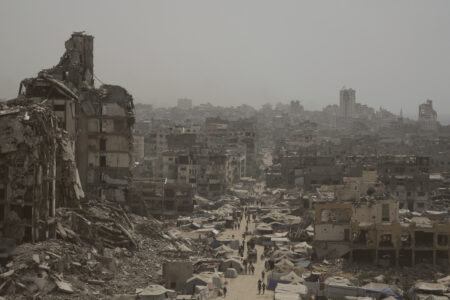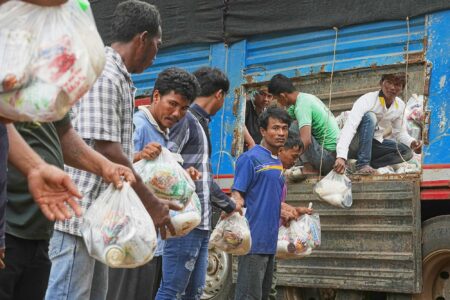Tsunami risk appears to pass for US after huge quake
HONOLULU (AP) — Fears of a devastating tsunami faded Wednesday for the U.S. and Japan after one of the strongest earthquakes ever recorded struck off a sparsely populated Russian peninsula, but new alerts along South America’s Pacific coast forced evacuations and closed beaches.
Warnings in the first hours after the 8.8 magnitude quake sent residents fleeing to rooftops in Japan and forced tourists out of beachfront hotels in Hawaii, snarling island traffic. In Russia, several people were hurt while rushing out of buildings, including a hospital patient who jumped from a window.
Millions of people were told to move away from the shore or seek high ground because they were potentially in the path of the tsunami waves, which struck seaside areas of Japan, Hawaii and the U.S. West Coast but did not appear to cause any major damage.
The dire warnings following the massive quake early Wednesday off Russia’s Kamchatka peninsula evoked memories of catastrophic damage caused by tsunamis over the last quarter-century.
In Japan, people flocked to evacuation centers, hilltop parks and rooftops in towns on the Pacific coast with fresh memories of the 2011 earthquake and tsunami that caused a nuclear disaster.
Cars jammed streets and highways in Honolulu, with traffic at a standstill even far from the sea.
“We’ve got water, we got some snacks … we’re going to stay elevated,” said Jimmy Markowski, whose family from Hot Springs, Arkansas, fled their Waikiki beach resort before evacuation orders were lifted. “This is our first tsunami warning ever. So this is all new to us.”
U.S. Secretary of Homeland Security Kristi Noem said the worst was over. Later Wednesday, tsunami advisories for Hawaii, Alaska, Oregon and Washington state were canceled but remained for parts of northern California, where authorities warned to stay away from beaches and advised that dangerous currents should be expected through this morning.
Experts say it’s challenging to know when to drop advisories, which signal the potential for strong currents, dangerous waves and flooding.
“It’s kind of hard to predict because this is such an impactful event and has created so many of these waves passing by,” said Dave Snider, tsunami warning coordinator for the National Tsunami Warning Center in Alaska.
The earthquake appeared to be the strongest recorded since the 9.0 magnitude earthquake off Japan in 2011 caused a massive tsunami and meltdowns at a nuclear power plant. The International Atomic Energy Agency said initial reports showed Japan’s nuclear plants were not affected this time.
Wednesday’s quake occurred along the “Ring of Fire,” a series of seismic faults around the Pacific Ocean. It was centered offshore, about 75 miles from Petropavlovsk-Kamchatsky, Kamchatka’s regional capital. Multiple aftershocks as strong as 6.9 magnitude followed.
Russia’s Oceanology Institute said tsunami waves of less than 20 feet were recorded near populated areas of the peninsula.
Lava began flowing Wednesday from the Northern Hemisphere’s largest volcano in a remote area of Kamchatka, the Russian Academy of Sciences’ geophysical service said.




